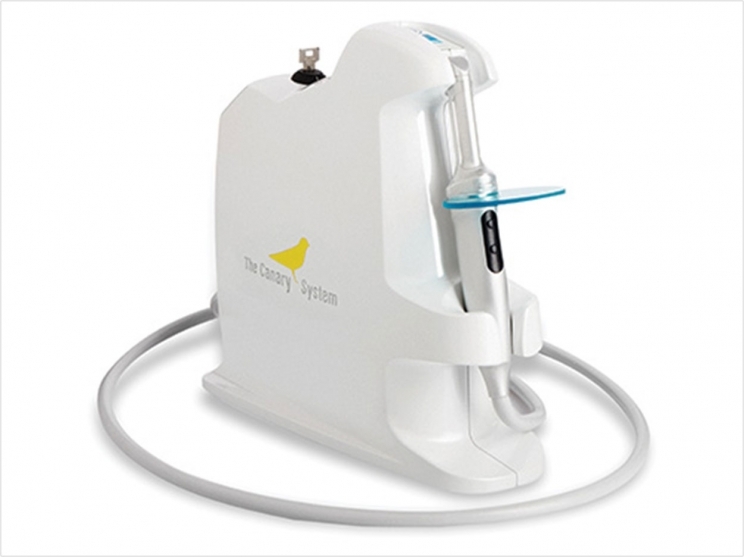
Researchers at the University of Toronto are using the Quantum Dental Technologies Canary System’s enhanced Truncated Correlation-Photothermal Coherence Tomography (eTC-PCT) to develop 3-D imaging of teeth.
Using a noninvasive low-powered laser, the technology should be able to detect tooth decay or changes in tooth structure up to about 3.8 mm below the tooth surface and create thin cross-sectional images that are 33 µm thick. Still under development, it will further expand the Canary System from point scan detection to full surface imaging, the researchers report.
“This new imaging technology has common scientific foundations to PTR (photothermal), the core technology in the Canary System. This next generation builds upon the knowledge gained in developing the Canary System,” said Andreas Mandelis, PhD, developer of the PTR technology, chief technology officer of Quantum Dental Technologies, and head of the Center for Advanced Diffusion-Wave and Photoacoustic Technologies, Department of Mechanical and Industrial Engineering and Institute of Biomaterials and Biomedical Engineering at the University of Toronto.
“As a dentist, the Canary System has changed the way I detect and manage tooth decay and other defects in teeth,” said Stephen Abrams, DDS, cofounder of Quantum Dental Technologies. “Finding and monitoring tooth decay early in the disease process means that one can look at less invasive processes for treating tooth decay.”
With its unique crystal structure diagnostics, the Canary System can quantify, image, monitor, and record changes in the structure of enamel, dentin, and cementum. It can detect cracks and caries beneath opaque sealants, around the margins of restorations, around orthodontic brackets, and beneath interproximal, occlusal, and smooth surfaces. Also, the Canary Cloud is designed to enable dentists to view and manage this data and track Canary usage in their office.
The study, “3D Dental Subsurface Imaging Using Enhanced Truncated Correlation-Photothermal Coherence Tomography,” was published by Scientific Reports.
Related Articles
Canary System Beats Bitewings and CBCT in Detecting Caries
Canary System Spots Caries Under Intact Margins
ADA Approves Code for Canary System











